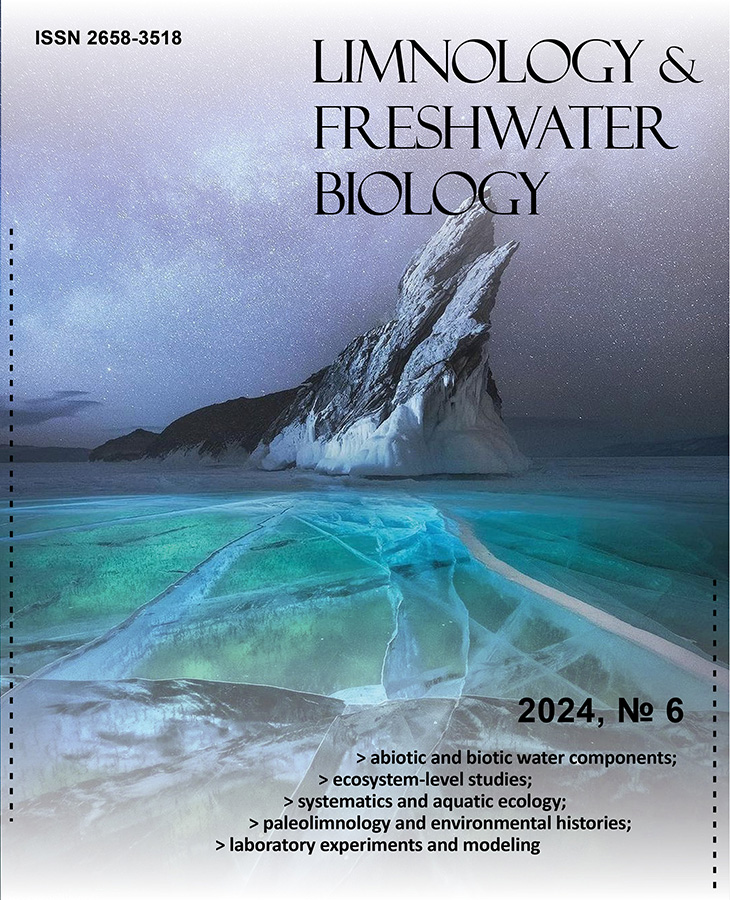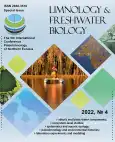Paleoclimatic conditions of a Late Pleistocene mega-lake in Kamchatka
- Авторы: Mukhametshina E.O.1, Zelenin E.A.2, Pendea I.F.3
-
Учреждения:
- Institute of Geography, Russian Academy of Sciences
- Geological Institute, Russian Academy of Sciences
- Lakehead University Orillia
- Выпуск: № 4 (2022)
- Страницы: 1506-1508
- Раздел: Статьи
- URL: https://journal-vniispk.ru/2658-3518/article/view/290440
- DOI: https://doi.org/10.31951/2658-3518-2022-A-4-1506
- ID: 290440
Цитировать
Полный текст
Аннотация
Here we present the pollen spectra of the Central Kamchatka depression from 28.4 to 7.9 ka. Our study is based on a key lacustrine section Kamplen that deposited in a Late Pleistocene mega-lake and thus represents an integral peninsula-scale record. Pollen analysis allows us to identify seven local pollen zones reflecting the main stages of vegetation and climate change.
Ключевые слова
Полный текст
1. Introduction
The Kamchatka Peninsula is a home of the very active landscapes, being transformed by both volcanism and tectonics; global climatic changes affect Kamchatka as well. However, Late Pleistocene history of Kamchatka remains unclear due to scarcity of datable material in studied disparate sedimentary sections. Our recent studies (Ponomareva et al., 2021) allowed us to create a tephrochronological framework that tied together and dated a number of lacustrine sections across the Central Kamchatka depression (CKD, Fig.). These findings suggest the existence of a mega-lake covered most of the CKD, as neither topography nor glaciers were sufficient barriers to isolate separate basins. In this study, we present a robust paleoclimatic reconstruction throughout the existence of the mega-lake.
Fig. Location map after Ponomareva et al. (2021) showing studied sections (red circles, KamPlen key site labelled in bold), and suggested extent of the CKD lake basin (blue outline in the figure and blue shade in the inset). Modern glaciers are shown in turquoise, Holocene volcanic deposits including debris fans are in light brown, Late Pleistocene volcanic deposits are in dark brown.
2. Materials and methods
Climatic reconstructions are based on the pollen analysis of the Kamplen section (Ponomareva et al., 2021), a Late Pleistocene lacustrine section with accurate AMS 14C age control. It is located to the north of the Klyuchevskoy volcano in the coastal cliff of Klyuchevskoe Lake (Fig.). Pollen preparation followed standard procedures for glycerine samples (Moore et al., 1991) processed at Lakehead University Orillia (Canada) laboratory. AMS radiocarbon age estimates are based on the age model published in the work of V.V. Ponomareva and co-authors (2021).
The section Kamplen includes light fawn silty loams with frequent horizontal layers of volcanic ash with a thickness of 0.5 to 4 cm. In the upper part they are covered by a soil-pyroclastic material. The depth was calculated not from the surface, but from the bottom of the eruption of the Khangar volcano tephra (KHG), which is widespread in the region and dates from 7872 ± 50 yr (Cook et al., 2018).
3. Results and discussion
Pollen analysis allows us to identify seven local pollen zones reflecting the main stages of vegetation and climate change.
Stage 28.4-25.3 ka marks the beginning of cooling during the transition from MIS 3 to MIS 2. It is characterized by a low content of tree pollen, the dominance of shrub pollen in the group of trees and shrubs, and the predominance of grass pollen. The climate was mild and humid, but not as mild as today. This contributed to the spread of shrubby tundra and subalpine meadows with rocky unvegetated areas. The areas of spruce, birch and poplar forests were small.
Stage 24.6–21.0 ka: the progressive cooling of the climate continued. The pollen diagram shows the increase in the proportion of dwarf pine (Pinus pumila), dwarf birch (Betula sect. Nanae) and willow (Salix) pollen. In addition, pollen of plants that tolerates cold climate appears. So the vegetation cover in the north of the CKD was dominated by grass-mixed alpine meadows, and the forest area was reduced.
Stage 21.0-18.0 ka corresponds to the peak LGM cooling. It was characterized by sparse vegetation, similar to modern high-altitude wastelands. Only plants capable of withstanding harsh climatic conditions could grow so close to the edge of the glacier: Koenigia, Dryas, Ranunculus nivalis, typical for high-altitude plant communities of the region. The stages 21.0 to 18.0 ka are characterized by a high taxonomic diversity of pollen without obvious dominants and low pollen concentration. I.F. Pendea et al. (2017) got similar results according to pollen analysis of Krutoberegovo section (east coast of Kamchatka peninsula). High taxonomical diversity they interpreted as signal of cold and dry climate.
Stage 18.0-12.5 ka. Pollen of cereals (Poaceae) sharply prevails in the spectra, pollen of Cyperaceae and Ranunculaceae is also relatively numerous. At the same time, there is very little pollen of trees and shrubs. Taxonomic diversity stays high and concentration is still low. This may be evidence of the ongoing continentalization of the climate which becomes maximum from 14.5 to 12.5 ka. Phytocenoses similar to tundra-steppe ones spread in the Central Kamchatka depression.
Stage 12.8 – 11.6 ka. This stage is characterised by a sharp increase in the proportion of shrubby alder (Alnus fruticosa) in the composition of pollen spectra, which can serve as a sign of the expansion of subalpine phytocenoses, currently represented mainly by shrubby alder and mountain pine thickets. Similar changes in the pollen spectra about 11.6 ka are recorded by many researchers of Western Beringia. An increase of shrubby forms of alder and birch pollen is noted in the Krutoberegovo section (Pendea et al., 2017), and in other sections of the eastern coast of Kamchatka and the entire north of the Russian Far East (Edwards et al., 2005). Apparently the response of vegetation to climate warming was very rapid.
Stage 11.6 – 7.9 ka. In the pollen spectra, an increase in the amount of Alnus hirsuta as well as A. fruticosa pollen is noticeable. In addition, at this time, the proportion of spores in the pollen spectra increases, mainly due to the spores of ferns from the Polypodiaceae. After 11.6 ka, during the transition to the Holocene, the climate became warmer and wetter, and as a result moisture-loving river-coastal and floodplain forests of poplar (Populus) and downy alder (A. hirsuta) spread in the CKD.
The sediments of the Kamplen section dated back to 28.4 to 11.6 ka contain pollen of aquatic plants, in particular such taxa as Potamogeton, Callitriche, Nymphaea, Nuphar and others. In addition, 11.6 ka BP, the nature of sedimentation changes and the soil-pyroclastic cover begins to accumulate. We assume that this indicates the lacustrine genesis of the Kamplen section deposits. It also indirectly indicates precisely the shallow depth of the reservoir, since pollen of aquatic plants attached to the bottom of the reservoir is found in deposits. The border of 11.6 ka marks the time of the giant lake draining.
4. Conclusions
The pollen analysis of the Kamplen section, which is the most accurately dated Late Pleistocene sedimentary record from Kamchatka Peninsula (Russian Far East), permitted us to date seven local pollen zones reflecting ecological changes in Kamchatka in the time range from 28.4 to 7.9 ka.
Acknowledgements
This research was supported by the Russian Science Foundation grant #21-77-10102. The authors are grateful to O. Borisova and V. Ponomareva for their comments and suggestions.
Conflict of interest
The authors declare no conflict of interest.
Об авторах
E. Mukhametshina
Institute of Geography, Russian Academy of Sciences
Автор, ответственный за переписку.
Email: eomukhametshina@igras.ru
Россия, Staromonetny lane 29, bld 4, Moscow, 119017
E. Zelenin
Geological Institute, Russian Academy of Sciences
Email: eomukhametshina@igras.ru
Россия, Pyzhevsky lane 7, bld. 1. Moscow 119017
I. Pendea
Lakehead University Orillia
Email: eomukhametshina@igras.ru
Канада, 500 University Avenue, Orillia, ON, L3V 0B9
Список литературы
- Cook E., Portnyagin M.V., Ponomareva V.V. et al. 2018. First identification of cryptotephra from the Kamchatka Peninsula in a Greenland ice core: implications of a widespread marker deposit that links Greenland to the Pacific Northwest. Quaternary Science Reviews 181: 200-206. doi: 10.1016/j.quascirev.2017.11.036
- Edwards M.E., Brubaker L.B., Lozhkin A.V. et al. 2005. Structurally novel biomes: a response to past warming in Beringia. Ecology 86(7): 1696-1703. doi: 10.1890/03-0787
- Moore P.D., Webb J.A., Collison M.E. 1991. Pollen analysis. Oxford: Blackwell Scientific Publications.
- Pendea I.F., Ponomareva V., Bourgeois J. et al. 2017. Late Glacial to Holocene paleoenvironmental change on the northwestern Pacific seaboard, Kamchatka Peninsula (Russia). Quaternary Science Reviews 157: 14-28. doi: 10.1016/j.quascirev.2016.11.035
- Ponomareva V., Pendea I.F., Zelenin E. et al. 2021. The first continuous late Pleistocene tephra record from Kamchatka Peninsula (NW Pacific) and its volcanological and paleogeographic implications. Quaternary Science Reviews 257(1): 106838. doi: 10.1016/j.quascirev.2021.106838
- Stockmarr J. 1971. Tablets with spores used in absolute pollen analysis. Pollen et Spores 13: 614-621.
Дополнительные файлы











